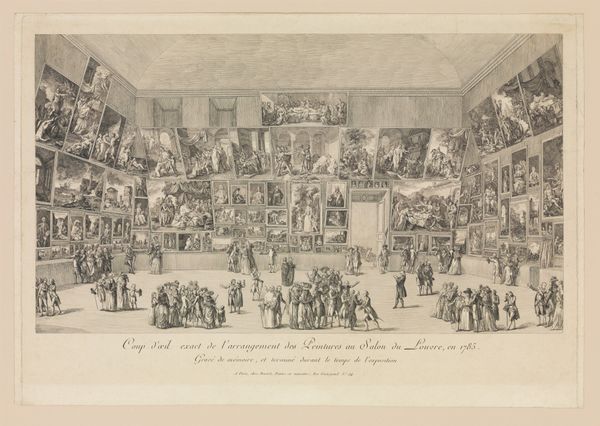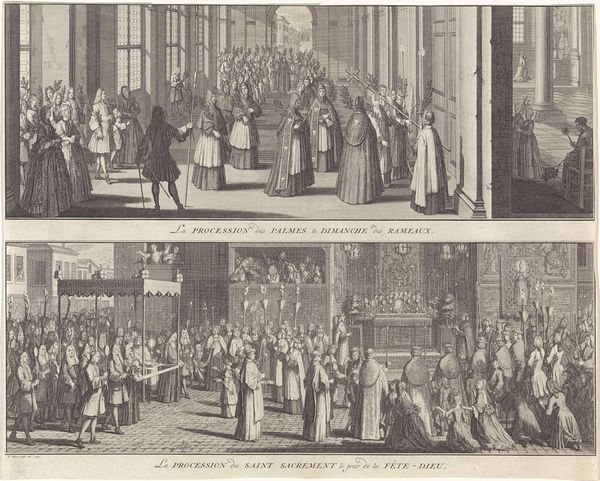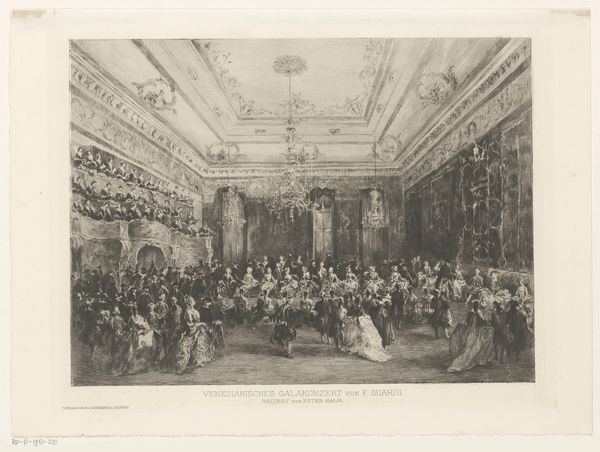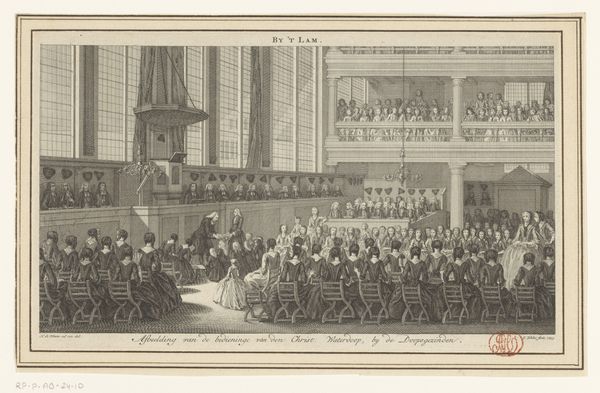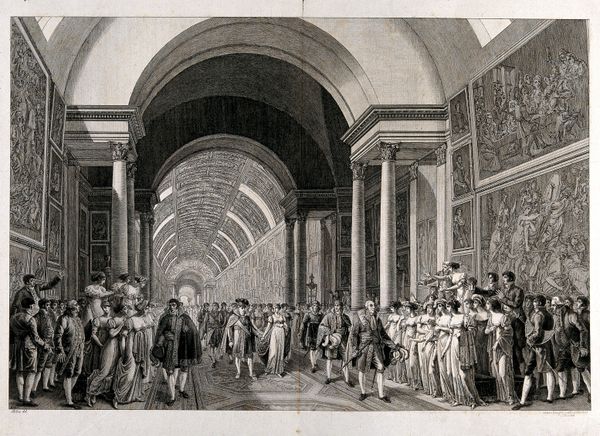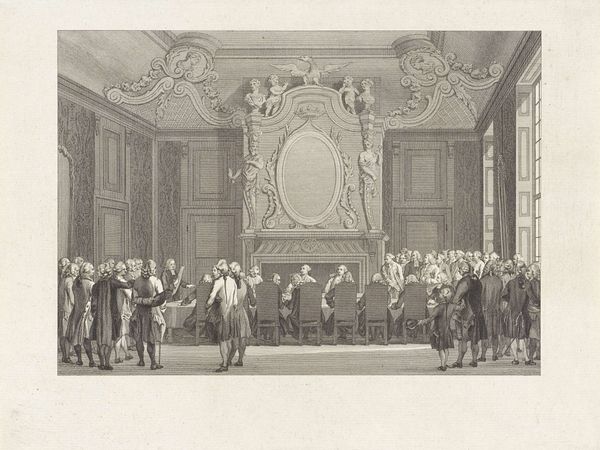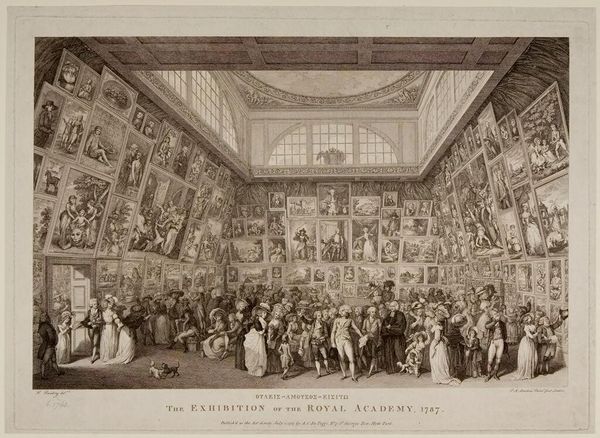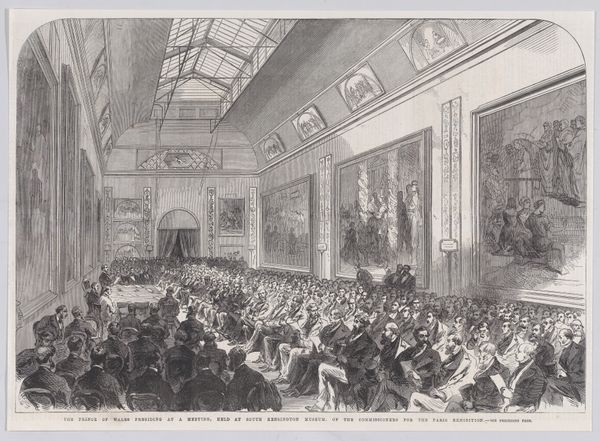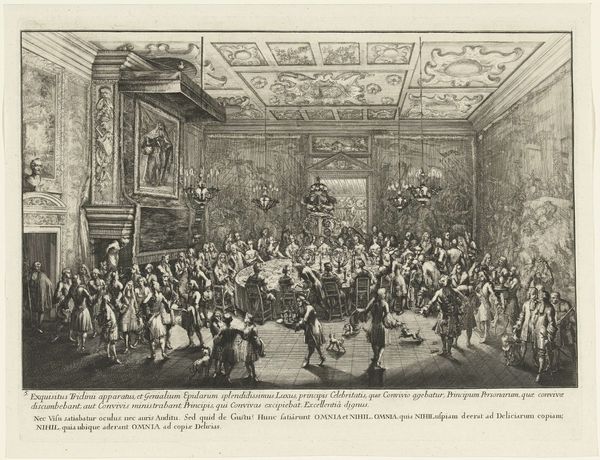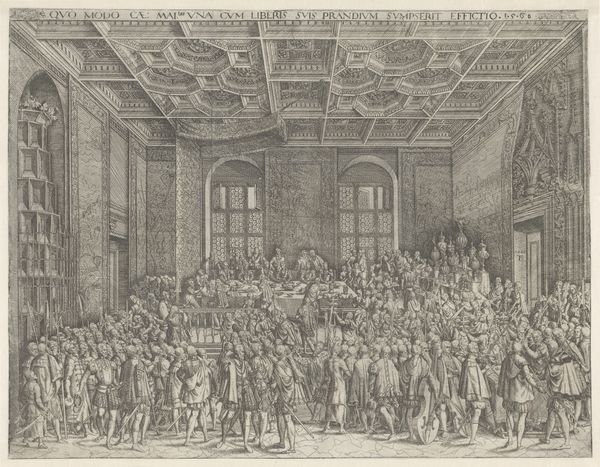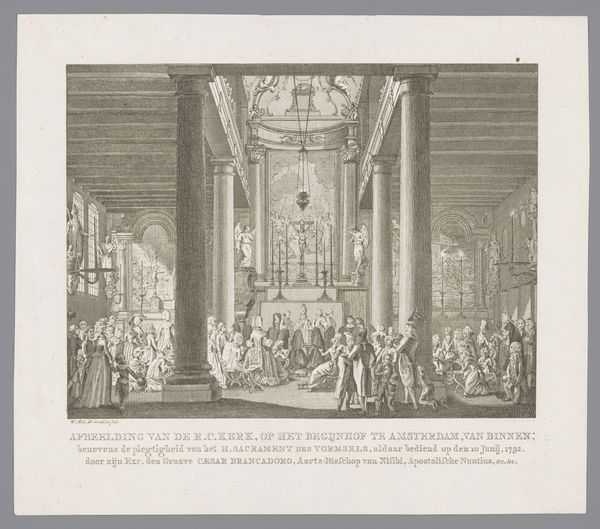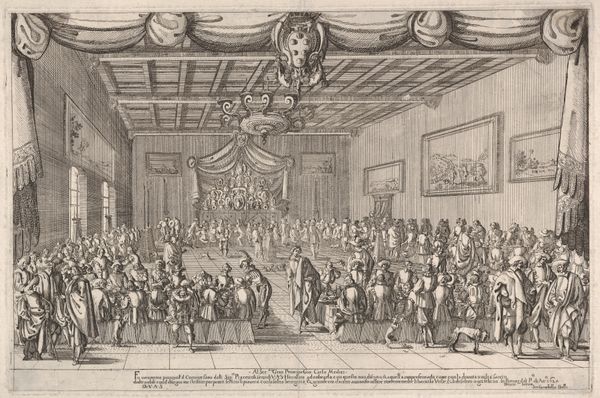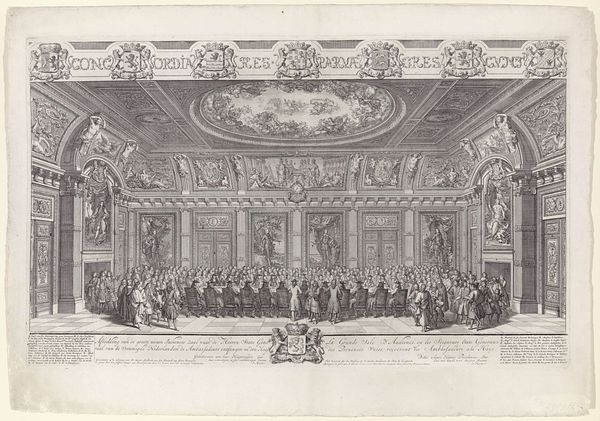
drawing, print, engraving
#
drawing
#
neoclacissism
# print
#
perspective
#
pencil drawing
#
genre-painting
#
history-painting
#
academic-art
#
engraving
#
realism
Dimensions: image: 12 11/16 x 19 5/16 in. (32.2 x 49.1 cm) sheet: 14 x 19 3/4 in. (35.6 x 50.2 cm)
Copyright: Public Domain
Curator: Oh my goodness, it's like a Where's Waldo of canvases! Editor: Indeed! What strikes you is entirely pertinent. Let's delve into "Exposition au Salon du Louvre en 1787," a print by Pietro Antonio Martini currently residing at the Metropolitan Museum of Art. What we are viewing is a detailed snapshot of the Salon, a cornerstone of the art world at the time. Curator: Snapshot's the word! It feels less like art and more like a really well-done illustration of a buzzing cocktail party—but, you know, with paintings instead of hors d'oeuvres. A bit overwhelming, honestly. Editor: Precisely. Martini’s engraving captures the density of the salon hang, the paintings stacked high, reflecting a particular aesthetic value: artistic abundance. Consider how perspective is deployed here; it draws the eye into the crowded space, emphasizing the Salon's social and artistic importance. It's an orchestrated chaos, if you will. Curator: Orchestrated is fancy way of saying they crammed as much art as humanly possible into one room! But there’s something so wonderfully… democratic about it? High and low art hanging cheek to jowl while people from every walk of life are eyeballing them. Editor: Your insight into the democratization of art is astute. The Salon was indeed a pivotal moment where art was made public. Note the Neoclassical aesthetic permeating the works displayed. These aren't mere decorations; they signify a cultural value system rooted in reason and order, values espoused during the Enlightenment. Martini captures more than a scene, he encapsulates an epoch's ideals. Curator: Yes, though look how everyone in the scene is engaging; there are gestures, the postures...It looks far more like a theatre than a gallery! Do you think it a tad ironic that a single drawing comments on such a hubbub of imagery, of different artistic interpretations of existence itself? Editor: Ah, an astute paradox, artist. Martini has in effect produced an historical meta-commentary on the phenomenon of art. A mirror reflecting art gazing at its beholder, an interpretation that asks us how we, in turn, interpret it. The drawing then, a document of art. Curator: It's just wild to think about. Almost like… well, like us, right now. Picking apart art about art. Time-traveling through taste! Editor: A delightful observation, which elegantly frames how, by grappling with Martini's visual language, we connect intimately with history and perhaps glimpse the future's view of us.
Comments
No comments
Be the first to comment and join the conversation on the ultimate creative platform.
